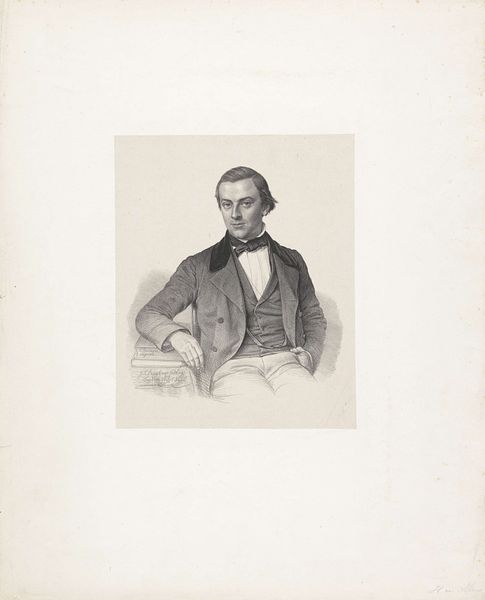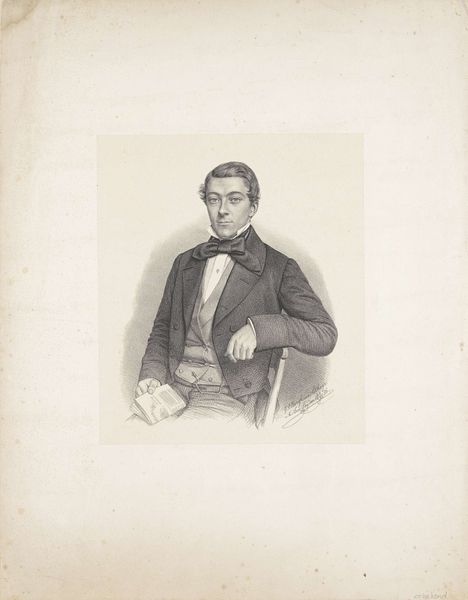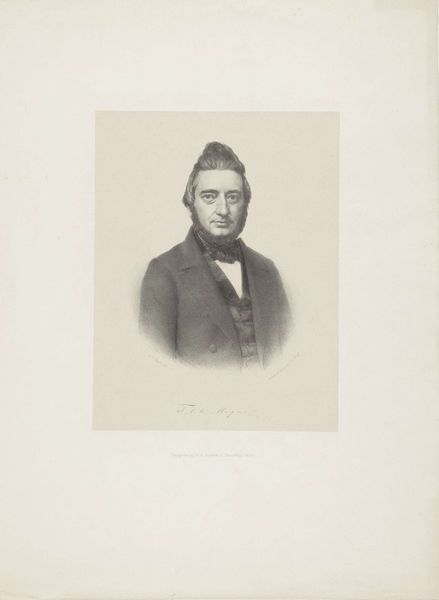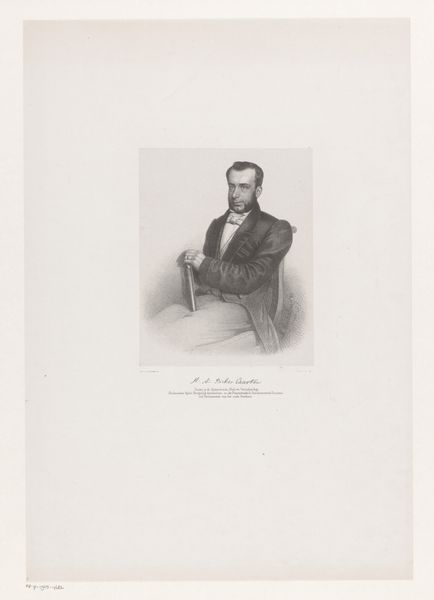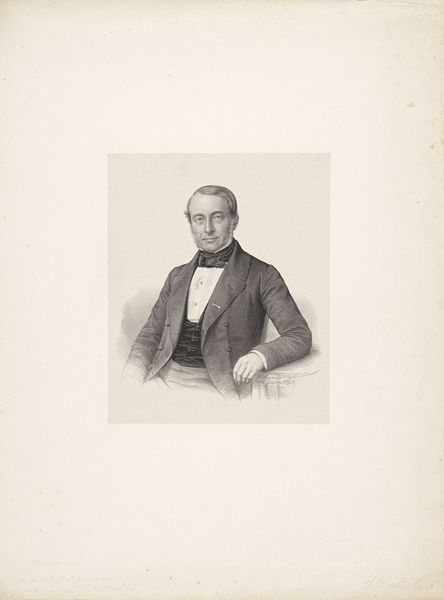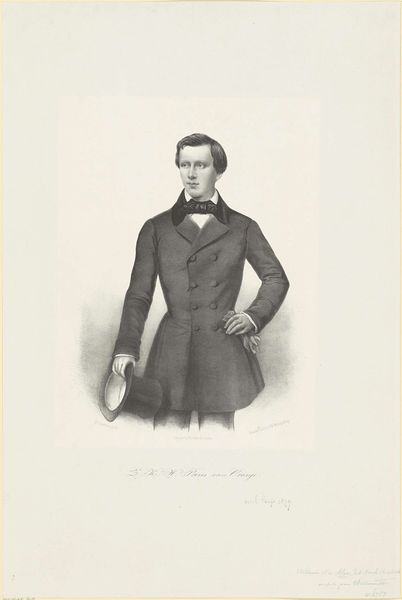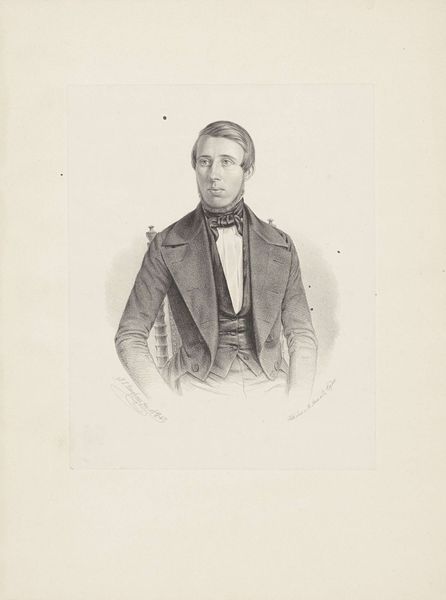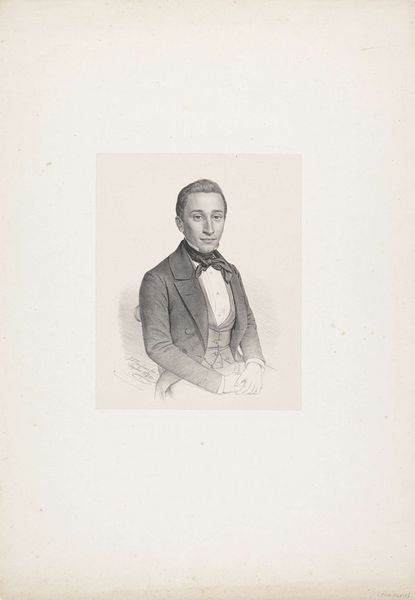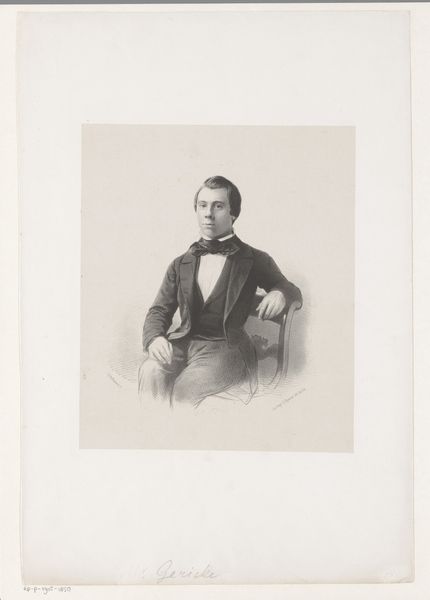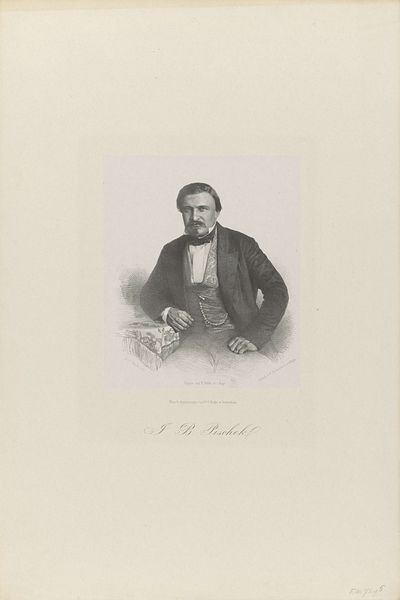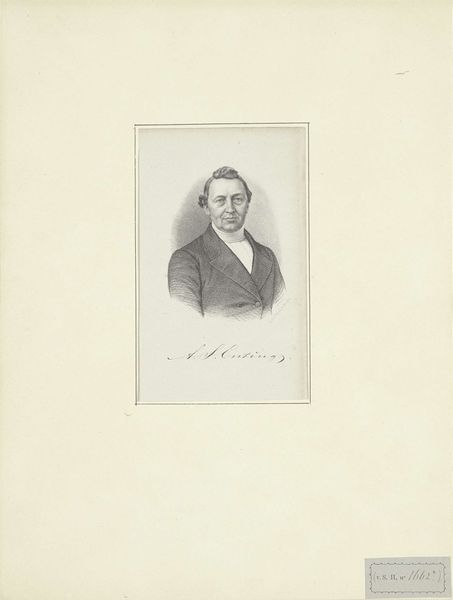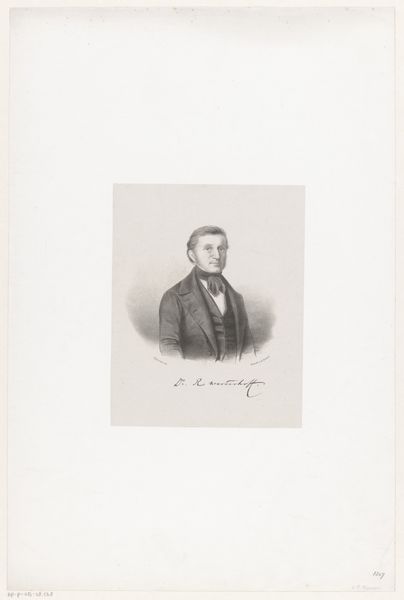
drawing, graphite
#
portrait
#
pencil drawn
#
drawing
#
pencil sketch
#
charcoal drawing
#
pencil drawing
#
graphite
#
graphite
#
realism
Dimensions: height 451 mm, width 358 mm
Copyright: Rijks Museum: Open Domain
Curator: This graphite drawing, entitled "Portret van J.P. Binnendijk," is housed right here at the Rijksmuseum. Its creation is placed sometime between 1861 and 1868, and the artist who rendered this likeness was Johann Peter Berghaus. It’s a fine example of realistic portraiture from that period. Editor: What strikes me is how buttoned-up everything is. The pose, the high collar, the meticulous detail—it almost feels like the artist and sitter are playing roles rather than revealing themselves. It has this strange mixture of self-importance and restraint, don't you think? Curator: It certainly evokes a particular era! In 19th-century portraiture, this careful construction of identity through visual cues was a common language. The stiff posture can symbolize dignity and social standing. Notice, for example, the subtle details in his garments – a clear signifier of status. Editor: And it almost feels ironic, because while Berghaus strives for photorealism in detail, it paradoxically feels less revealing than, say, a looser sketch where the essence of the subject comes through despite its incompleteness. Does the image carry encoded meanings for us today that have nothing to do with its original purpose, I wonder? Curator: Potentially, yes! I think as viewers, our readings shift according to our cultural context and lived experience. Perhaps today we see that stiff formality as a marker of repressed emotion, something that someone of that era might not have read that way. Editor: It's intriguing. This portrait freezes a specific time, but its implications are never fixed. Maybe, more than representing J.P. Binnendijk, it's become a mirror reflecting our contemporary expectations about who and how we're supposed to be. The dialogue is less about who is in this image than who we become standing in front of it. Curator: An astute point. In exploring Berghaus’ drawing today, it reveals the fluid nature of historical context as it constantly re-interprets visual cues. Editor: Well said! I appreciate you clarifying these contextual factors, providing not just biographical but, dare I say it, almost archeological insight into portraiture of that era!
Comments
No comments
Be the first to comment and join the conversation on the ultimate creative platform.
